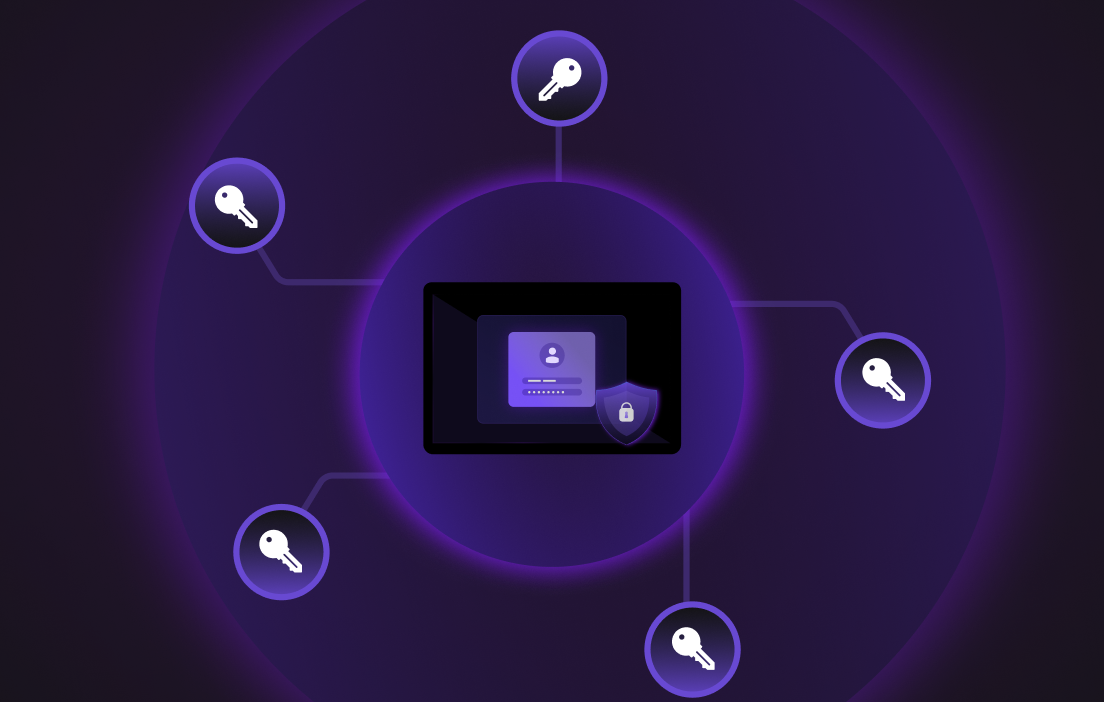With organizations moving their workloads to the cloud and regulations becoming more complex, securing sensitive data is a mandate for any successful business. There are two main approaches that give companies more control over their cloud-based information: Bring Your Own Encryption (BYOE) and Bring Your Own Key (BYOK).
While similar, there are several important differences between the two that impact how data is handled, where it’s encrypted, and who controls access to it.
Here, we’ll look at the key concepts behind BYOK and BYOE, how they differ, and help you determine which model is a better fit for your data security strategy. We’ll cover:
- A clear look at BYOK (Bring Your Own Key)
- How BYOE (Bring Your Own Encryption) works
- A side-by-side comparison of BYOE vs BYOK
- How to choose the right model for your organization
Let’s get started.
What Is BYOK (Bring Your Own Key)?
Bring Your Own Key, or BYOK, means instead of letting your cloud provider generate and manage encryption keys, you generate your own and bring them with you.
Think of it as bringing your own lock to a rented storage unit. The provider offers the space, but you're the one who secures the door. In a BYOK setup, the cloud platform (like AWS, Google Cloud, or Azure) still handles the actual encryption and decryption processes, but you control the key that unlocks your data.
This added layer of control is critical when trying to meet strict compliance requirements, such as GDPR, HIPAA, or PCI DSS, or if you want better visibility into who’s accessing your information.
For example, a large bank might use AWS for data analytics but store its encryption keys in an on-premises key management system (KMS) to better manage compliance and also for easier audits of key inventory.
Cloud key management has become so vital that even the National Security Agency (NSA) and the Cybersecurity & Infrastructure Security Agency (CISA) have offered guidance on best practices [source].
What Is BYOE (Bring Your Own Encryption)?
Bring Your Own Encryption—BYOE—takes control a step further. With BYOE, you're not just managing the keys; you're also in charge of the entire encryption and decryption process.
With BYOE, you deploy your own encryption software or hardware (often inside a secure enclave or Confidential Computing environment) alongside your cloud workloads. This allows you to encrypt the data before it’s handed off to the cloud service provider and to decrypt it when it returns. This way, the cloud provider never has access to your raw data.
The analogy here is like sealing a box before sending it to a shipping company. They can carry the box, but they can’t open it. They don’t have the key, and they don’t know what is inside.
How does this look in the real world? A biotech company could process genomic data in the cloud using BYOE to encrypt data inside a trusted execution environment (TEE) for maximum confidentiality throughout the lifecycle.
[Learn more about: How to control encryption across hybrid multicloud environments]
BYOE vs BYOK: What’s the Real Difference?
Ultimately, BYOK and BYOE are both about data control, but they’re not interchangeable.
Let’s break it down:
| Feature | BYOK | BYOE |
|---|---|---|
| Key Ownership | You own the keys | You own the keys |
| Encryption Engine | Cloud provider | You |
| Encryption Location | Cloud infrastructure | Your environment |
| Who Can See the Data | Potentially the cloud provider | Only you |
| Use Case | Auditability and compliance | Deep confidentiality and control |
So, how do you choose? If your main priority is auditing your data to prove who accessed what and when, BYOK might check that box. But if you're more concerned about ensuring nobody outside your organization ever sees your data, even in memory, then BYOE is the better fit.
One thing to note, however, is that BYOE often involves more setup and complexity. You’ll need to deploy and maintain encryption tools, but the payoff is end-to-end control.
For broader context, the Cloud Security Alliance has published three considerations and best practices for key management life cycles [source].
Choosing Between BYOE and BYOK
Now for the big question: which should you use—BYOE or BYOK? The answer depends on what you're looking to accomplish.
Go with BYOK if:
- You need a more lightweight way to meet compliance regulations.
- You want to maintain some control without changing how your cloud services work.
- You trust your cloud provider but would like more visibility.
On the other hand, opt for BYOE if:
- You work with highly sensitive data (healthcare records, financial transactions, IP, etc.).
- You're concerned about insider threats, data residency, or cross-border regulations.
- You want encryption entirely on your terms, not the cloud provider’s.
All of this said, it doesn’t have to be an “either-or” decision. Many enterprises use a hybrid strategy that includes BYOK for general workloads and BYOE for higher-risk environments. Still, as encryption technologies evolve and become more mainstream, BYOE is increasingly practical, even for non-security teams.
Aligning Your Encryption Strategy with Business Goals
In what has become a cloud-first world, relying on default security settings isn’t enough. Most businesses need to own their data security strategy, and it starts with choosing the right encryption model.
To recap: Bring Your Own Key (BYOK) gives you better control and oversight without disrupting cloud workflows. It’s a good fit for meeting regulations and gaining transparency. Bring Your Own Encryption (BYOE) provides even stronger guarantees by keeping encryption and decryption entirely in your hands, making it ideal when trust boundaries must be tightly defined.
Both strategies can be useful, but what matters most is knowing when and how to use them.
Take the Next Step Toward Cloud Data Control
Looking to strengthen your organization’s approach to BYOE or BYOK? Fortanix helps leading enterprises implement secure, scalable encryption strategies that support zero trust, data sovereignty, and cloud compliance.
- Request a demo to see how BYOE works in action
- Contact us to discuss your use case
- Learn more about Fortanix BYOE solutions











